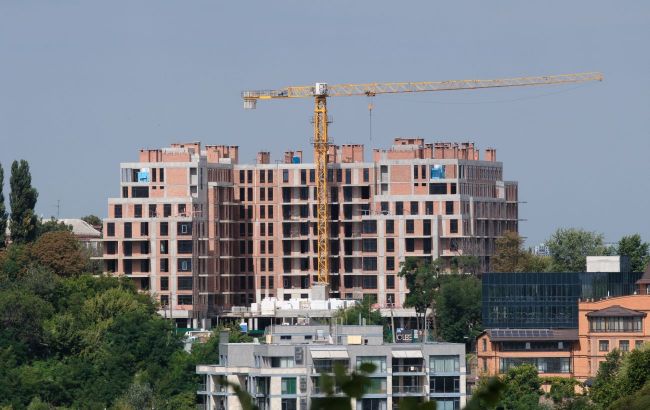Russian real estate collapses nearly 50% as developers face bankruptcy
 Illustrative photo: Russia's war in Ukraine is adding to problems in the construction industry (Vitalii Nosach, RBC-Ukraine)
Illustrative photo: Russia's war in Ukraine is adding to problems in the construction industry (Vitalii Nosach, RBC-Ukraine)
Investments in Russian real estate dropped nearly 50% in the first half of 2025. Other indicators suggest widespread bankruptcies among developers, reports the Foreign Intelligence Service of Ukraine (FISU).
The FISU stated that approximately 20% of developers in Russia are on the brink of bankruptcy due to declining sales and high interest rates. That share could soon exceed 30%.
"The most vulnerable are companies in the mass housing segment that depend on mortgage demand. More than 19 % of developers are officially postponing the completion dates of their projects, and delays of more than six months put them in the 'problematic' category," the FISU said.
The intelligence service explained that the construction sector suffers from low demand, limited state support, and a diversion of resources to the war in Ukraine. This has led to lower sales, higher debt burdens, and halted construction.
FISU data shows investments in real estate dropped 44% in the first half of the year. Banks are also rejecting clients: by June, 50.6% of mortgage applications were denied.
Even borrowers with perfect credit histories are finding apartments nearly unattainable. According to FISU, the real cost of a mortgage, including insurance and fees, reaches at least 25% annually.
"Such interest rates put pressure not only on households but also on businesses. In the corporate segment, the share of non-performing loans rose to 10.4 % in the second quarter, or to $111.9 billion, having added $8.6 billion over three months. The most significant deterioration was recorded in the real estate sector," the publication said.
Russian authorities are now considering a moratorium on developer bankruptcies, external restructuring, and temporary state funds to complete problematic projects.
Russia's economic downturn
The Ukrainian Foreign Intelligence Service reported yesterday that one in ten companies in Russia plans to reduce staff this fall. Businesses are cutting costs due to falling demand, higher taxes, and more expensive credit.

